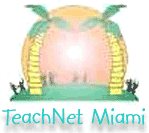|
How it Works:
The water on our planet is constantly being recycled by the water cycle. How do clouds and rain form are questions constantly asked by children. These questions can be answered through the study of the water cycle.
Teaching the water cycle allows for hands-on activities, and the integration of technology.
This interdisciplinary unit introduces students to the water cycle and its individual steps in a meaningful way. The lesson will include hands-on activities, software exploration, spreadsheet design, use of the digital camera, use of the Internet, and the creation of a slide
show.
The hands-on activities will include the use of the digital camera, communication with their pen pals and the use of the spreadsheet. With the use of software the students will be introduced with information about the water cycle. With Internet access, students will gather information to develop a slide show that will assess the students understanding of the water cycle. Slide show will be printed to prepare a poster.
Standards:
The students recognize that
*Clouds form when warm air meets cooler air
*Rain forms from water drops in clouds
*There are different stages in the water cycle
*Students will understand and use the tools of data analysis for managing
information
*Students will write with focus on a given topic
*Students will read to perform a task
*Students will understand ways natural resources affect our daily life
*Students will use technology to enhance learning and
creativity
Estimated Class Periods To Complete:
10 or more
Software and Materials Used:
Claris Works
Kid Pix
The Golden Book Encyclopedia CD Rom
TV view
Projector
Smart Board
Digital Camera
Internet
Poster Printer
Two liter plastic bottle
Small bowl
Several ice cubes
kettle
Large Mirror
Water
Potholder or glove
clear glass jar with lid
Piece of Tape
Electric pan
Journals
Keywords:
water cycle, water vapor, evaporate, condense, clouds, rain, weather, spreadsheet, survey, data
Students:
Nineteen students from a first grade class of mixed ability levels and ethnic background were involved in this project. They worked with the classroom teacher and the technology teacher in developing their projects. Students worked in small cooperative groups in many of the activities and during their research.
Overall Value:
Learning about the water cycle was very exciting, fun and intensive for the students. Access to the various Internet web sites on water cycle helped a great deal as children researched and participated in some of the activities on- line. They also enjoyed writing to their pen pals about their experiments and learning activities. The use of Kid Pix to assess students knowledge was a tremendous tool to use instead of a written test.
Tips:
Access to the Internet is important. Mini-lessons on using Kid Pix are important before the students begin their projects. Imagination and creativity
are promoted.
|
About the Teacher:
Carmen L. Ramos has been an exceptional teacher for the past twenty years.
She began teaching in San Juan, Puerto Rico in 1980. In 1992, Carmen moved to
Miami Florida. As soon as she moved to Miami, she started teaching at Lorah
Park Elementary School. In Lorah Park, she taught Spanish for five years. She
is currently teaching first grade where she does an extraordinary job. She has
been part of the Citibank Family Tech Program for the last two years. Mrs.
Ramos is the HOSTS (Helping One Student To Succeed) Mentoring lead teacher as
well as a member of the Instructional Improvement Team.
Subjects:
Science and English
Grade Levels:
Two
Email Carmen
|

